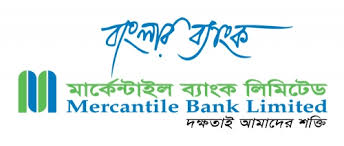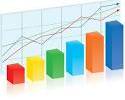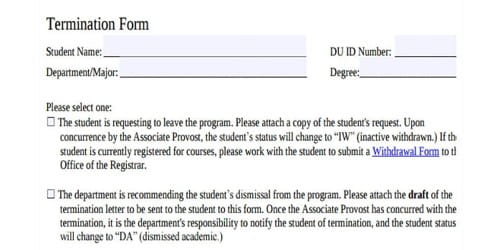CREDIT SECTION
I have worked in the Credit department about at the end of my internship at MBL, Kawran Bazar Branch. The first thing I have noted that this section is the smallest in terms of space or manpower. The main customers of credit are the corporate customers who are doing actually import-export business. There are very few retail customers because this branch has changed its policy due poor record of recovery in consumer credit scheme or small loan scheme. Only those small loans are allowed which are covered by 1st class security like, deposit scheme balance, FDR etc.
This department is headed by a senior executive officer. The man next to him is in the rank of Executive Officer. And there are two assistant officers in this section. I have met two new officers take their charge in this section when I have almost finished my intern there. I have observed the activities they are performing and try to learn from them. My observations are described in the later part of this section.
Why Banks Go for Lending?
Lending is the one of the core functions of a bank. The major portion of bank funds is employed by way of loans and advances, which is the most profitable employment of its funds too. The major part of bank’s income is earned from interest and discount on the funds so lent. It is the major source of income to cover the interest which is incurred due to mobilization of deposit, operating expenses and also to earn profit. Lending nevertheless is not without certain inherent risk largely depending on the borrowed funds a banker cannot afford to take undue risk in lending. While lending his funds, a banker, therefore, follows a very cautious policy and conducts his business on the basis of the well-known principles of sound lending in order to minimize the risk.
Principle of Lending Followed by Mercantile Bank:
The Principle of lending is a collection of certain accepted time tested standards, which ensure the proper use of loan fund in a profitable way and its timely recovery.
The five principles of lending activities are:
1. Safety
2. Security
3. Liquidity
4. Adequate yield
5. Diversity
1. Safety
Safety should get the prior importance at the time of sanctioning the loan. At the time of maturity the borrower may not be able to pay the loan amount. Banker should not sacrifice safety for profitability.
MBL invests its money on safe and sound projects,
2. Security
Banker should be careful in the selection of security to maintain the safety of the loan. Banker should properly evaluate the proper value of the security. The securities which can be easily liquidated should get more importance. There are two types of securities, Primary Security and Collateral Security.
3. Liquidity
Banker should consider the liquidity position of the bank at the time of sanctioning loan. If bank faces liquidity crisis than it might need to borrow at a very high rate from the money market, and the customer looses their faith on the bank. Loan should be sanctioned considering the maturity of different liabilities that bank need to pay in future so that at that period there will be no crisis.
4. Adequate Yield
As a commercial origination Banker should consider the profitability. So banker should consider the interest rate when go for lending. Always Banker should fix such an interest rate for it’s lending which should be an acceptable margin over its cost of fund.
5. Diversity
Banker should minimize the fort polio risk by putting its fund in the different fields. If Bank put its entire loan able fund in one sector it will increase the risk. Banker should distribute its loan able fund in different sectors. So if it faces any problem in any sector it can be covered by the profit of another sector.
Functions of Credit Section:
The following things are done in this department:
Preparation of sanction letter as per Ho approval.
Monitoring & follow-up of credit facilities extended from this Br.
Preparation for proposal of Project loan for boards Approval.
All works related to custodial service.
All type of correspondence related to credit section.
Preparation of Credit Memos for approval/renewal of the Credit facilities.
Processing of Consumer Credit Loans & preparation of all statements of the Consumer Credit Loans.
Types of Credit Facilities:
The credit section of MBL, Kawran Bazar Branch provides two kinds of credit facilities
Funded Credit Facilities.
Non-Funded Credit Facilities.
Funded Facilities:
These are facilities that are associated with direct fund involvement.
These include:
a) Secured Overdraft (SOD)
b) Cash Credit (hypothecation)
c) Advance against work order
d) Lease Finance
e) Hire Purchase
f) Advance against FDR.
g) Personal Loan
h) Staff Loan
i) House Building loan
j) Time loan
k) Consumer Finance
l) Consumer credit Scheme.
m) Small loan Scheme
n) General Loan
Non-Funded Facilities:
There is no direct monetary involvement.
These include:
Bank Guarantee.
Letters of Credit.
Credit section processes only bank guarantee, L/C is processed by Foreign Exchange section.
FUNDED FACILITIES
Secured Overdraft (SOD): Overdraft is an arrangement where a borrower is allowed to withdraw over and above his credit balance in his current account up to an agreed limit. In SOD loan normally overdraft facility is allowed only once. Since his account is overdrawn, he can credit any number of times he wants. In SOD, there exists a first class security most commonly FDR, Work order, Savings scheme balance etc. Each overdraft facility requires separate approval.
CC (Hypothecation): It’s a kind of short term continuous loan which is used for financing working capital of a firm. Overdraft facility is sanctioned against the primary security of hypothecation of raw materials and or finished goods. The borrower by signing a letter of hypothecation, duly stamped, creates a charge for an amount of debt but neither the possession nor the ownership is passed on the bank. The borrower binds him to give possession of the goods to the bank when called upon to do so. Practically the bank has no security in this case except the charge documents. Hence the bank insists on the borrower on furnishing some collateral securities. The borrower is permitted to draw and repay any number of times, provided the total amount overdrawn does not exceed the agreed limit.
Advance against work order: Advance is granted to a client against the work order of Government Department, Corporation, Autonomous bodies and reputed multinational/ private organization. The client’s managerial capability, equity strength, nature of the scheduled work is judged to arrive at a logical decision. Disbursement is made after completion of documentation formalities. Besides usual charge documents a notarized irrevocable power of attorney to collect the bills from the concerned authority and a letter from the concerned authority confirming direct payment to the bank is also obtained. The work is strictly monitored to review the progress at each interval.
Lease Finance : The other name of lease finance is equipment financing. Bank, in stead of providing loan for equipment/machinery purchase, bank procure the equipment and the lessee pay the rental for using the leased equipment. Bank determine the rental considering the all the costs involved in purchasing the assets, the profit margin and depreciation of the asset. Leasing is a contract between two parties lessor & lessee, that conveys the right of possession and use of specific assets to the lessee for a specific span of time and in return the lessee pays predetermined rentals to the owner i.e. lessor. Lease finance is proved a better mode of financing because it can prevent diversion of fund by the borrower.
Hire Purchase: This type of financing is similar in nature with lease financing. Here the borrower pays the rental as well as a part of the principal as installment. After completion of successful payment of installments borrower become the owner of that asset.
Advance against FDR: Advance is granted to a client against the security of Fixed Deposit Receipt. Advance is granted to the person to whom the instrument belongs. The instrument is to be discharged duly the holder (or all of them if they are more than one) on appropriate revenue. The signature must tally with that on the bank’s recover. The discharged instrument is surrendered to the bank along with a letter signed by holder/ holders authorizing the bank to appropriate the proceeds of the instrument on due date towards the repayment of the advance. The Bank’s lien is prominently noted on the face of the instrument under the signature of an authorized bank official.
Loan against Trust Receipt (LTR): Advance against a TR obtained from the customer is allowed when the documents covering an import shipment are given without payment. The customer holds the goods or their sale proceeds in Trust for the bank until the LTR is fully paid off. TR is a document, which creates the banker’s lien on the goods. The period of TR may be 30,45,60/90 days. The sale proceeds of goods held in trust must be deposited to the bank by the borrower irrespective of period of TR. In MBL LTR facilities are provided in only collateral security is provided by the client. Normally clients enjoy LTR facility as a composite limit, that limit is secured by collateral security.
Staff Loan: Bank official from senior officer and above is eligible for this loan. The maximum amount disbursed is Taka.50,000/- for a period of 2 years. The rate of interest is 8% per annum.
House Building Loan: Banks are not so much interested in providing house building loan. If any borrower could provide cash collateral then this type of loan could easily obtained. Besides, the land & building are also mortgaged with the bank. Bank also inspect whether the building are built by following the approved design of the appropriate authority.
Time Loan: This loan matures with in one year.
Term loan: These are loans with maturity period of 1 year or above. These loans are repayable in installments. If the loan is in between 1-5 year, it is called medium term loan and above 5 years loan is called long term loan.
Consumer Credit Scheme: This scheme is aimed to attract consumers from the middle & upper middle class population with limited income and also good business persons. Two guarantors are required to avail this loan. The borrower should have an account (SB or CD) with the bank. The bank finances maximum Taka. 4 lacs for cars & Taka. 2 lacs for other items). Minimum 25% of the purchase cost of the product is to be deposited by the borrower with the bank as equity before the disbursement of the loan. The purchased items are hypothecated with the bank. The disbursement of the loan is effected by debiting time loan / term loan account to be opened in the name of the borrower. Loan amount is disbursed through A/C payee pay order / Demand Draft Directly to the seller after submission of indent, deposit of client equity & completion of documentation formalities, Interest is 15% per quarter, 2% of loan amount is taken as processing fees. For car loan risk fund of 2% is also kept. The bank obtains post dated A/C payee checks drawn in favor of the bank for the monthly installments covering the lending period from the borrower & the loan amount is adjusted on the due date of installments.
Small Loan Scheme: The purpose of small loan scheme to provide working capital for small businessmen. The documents required are: Trade license, vat certificate, rent deed of the shop, tax receipt and bank statement of operation of their account for the last three months. This loan is provided for two years. The usual charged documents are DP note, Letter of arrangement, Letter of hypothecation, personal guarantees of loanee and the guarantor.
General Loan: The loans which are not fall in the categories, that is miscellaneous in category is known as general loan.
NON-FUNDED FACILITIES:
Letter of guarantee: According to the Section 126 of Contract Act, 1872, guarantee can be defined as a contract to perform the promise or discharge of liability of a third person in case of his default. The person who gives the guarantee is called the ‘surety’, the person in respect of whose default the guarantee is given is called ‘the principal debtor’ and the person to whom the guarantee is given is called the ‘creditor’. It is an irrevocable undertaking to pay in case of a certain eventuality.
As service to their customers, bankers sometimes issue guarantees of various types on customer’s behalf to third parties. By issuing guarantee Bank undertakes to pay the beneficiary the sum stated in the bank guarantee upon the beneficiary’s first written demand without argument.
TYPES OF GUARANTEE:
Different types of guarantee offered by ABBL are as follows:
Tender or bid bond guarantee: The tender guarantee assures the tenderee that tenderor shall uphold the conditions of his tender during the period of the offer as binding and that he /she will also sign the contract in the event of the order being granted.
Performance guarantee: A Performance guarantee expires on completion of the delivery or performance. Beneficiary finds that as a guarantee, the contract will be fulfilled in every respect and can retain the guarantee as per provision for long time. This can be counteracted by including a clause stating that the supplier can claim under the guarantee, by presenting an acceptance certificate signed by the buyer.
Advanced payment guarantee (APG): This type of guarantee is given against work order in order to ensure that the contractor who gets the work order will perform his job after getting advance payment from the work provider.
The customer applies to the bank to issue a guarantee along with the following information:
Name of the Borrower with address
Nature of Facility
Extent of Facility
Purpose
Security
Margin
Commission
Validity
Beneficiary
After that, the bank official scrutinizes the application and takes the guarantee margin, commission, postage charge from the customer.
Then Bank issues Bank Guarantee on Judicial Stamp. The conditions for issuing Bank Guarantee are-
The customer must maintain a Current Deposit (CD) account.
The must keep certain percentage of guaranteed money (usually 2%) as margin.
Bank charges 0.50% commission on the guaranteed money per quarter (i.e., 3 months).
After realizing all the above charges, Bank then issues the Guarantee. For this issuance, Banker’s Liability is created and the following entries are given
- Customer’s Liability —————————————- Dr.
- Banker’s Liability ——————————————- Cr.
- Customer A/C (Savings / Current) ———————– Dr.
Margin A/C ————————————————– Cr.
Commission A/C ——————————————– Cr.
Stamp A/C —————————————————- Cr.
Other fees and charges A/C ——————————– Cr.
When the guarantee is expired, the guarantee is marked as “cancelled” and the following entries are given
a. Banks liability A/C ——————————————- Dr.
b. Customer’s liability A/C ————————————- Cr.
Selection of the Borrower
In lending, the most important step is the selection of the borrower. Due to the asymmetric information and moral hazard, banks have to suffer a lot due to the classified loans and advances, which weakens the financial soundness of the bank. If the selection of borrower is correct, that is, the borrower is of good character, capital and capacity or of reliability, resourceful and responsible; the bank can easily get the return from the lending. Consequently, monitoring is made much easier for the banker. From this point of view, MBL follows the following procedures,-
Studying past track record: After getting an application for a loan, an MBL Official studies the past track record of the applicant. Generally the study includes:
Account balances and the past transactions.
Credit report from other banks.
Information of the Industry by studying market feasibility.
Financial statements (balance sheet, cash flow statement, and income statement). If the borrower is a sole- proprietor, then the single entry accounting treatment is converted to double entry system.
Report from Credit Information Bureau of Bangladesh Bank if the amount is more than TK.10.00 lac.
Borrower analysis: Borrower analysis is done from the angle of 3-C (character, capital, capacity) or 3-R (reliability, resourcefulness, responsibility). It follows that the bank forms a rational judgment about the integrity of the borrower, which should be undoubted. The human skill, conceptual skill, operational skill is qualitatively analyzed.
Business analysis: Business analysis is done from two angles-terms and conditions and collateral securities.
General Procedures of Loans and Advance
The total process of proposal and sanction of loan is a continuous process. In a particular stage the described loan is sanctioned or rejected by the authority. The total process is given below.
Step -1 : The client applies for accretion amount of loan in prescribed form, which is available in the branch office.
Step –2 : Scrutiny by an officer of loan proposal whether party has submitted the documents as per circular.
Documents required with loan application form:
- Trade license,
- Trade Mark Registration
- Income tax certificate
- Certificate of Lease Financing Company
- Life description of M.D and Directors
- Memorandum of meeting of Board of Directors about taking loan from the branch
- Utility cost certificate approved by the M.D
- Building lay -out plan
- Forecasted productions sales and profit limit
- 3 years projected balance sheet,
- Cash flow at the end of the year
Step-3 : Communicate with the party if there is any shortage of documents and collect the required papers
Step -4 : The branch manager or an officer then takes the responsibility to visit and evaluate the concern
Step-5 : A Credit report is prepared on the borrower
Step-6 : The concerning officer then wants ” non-incumbent certificate” from the bank lawyer.
Step-7 : Sends letters to different banks and financial institutions for recommendations.
Step-8 : Forwards the documents to Head Office with proper recommendations.
Step -9 : The proposal is placed in Board of Directors after getting CIB report. If the board sanctions the loan, a sanction letter is issued to the branch office.
Step -10 : The branch then informs the party by letter,
Step -11 : If the party accepts the terms and conditions of the loan, then they are requested to complete documentation as per sanction letter.
Step -12 : After completion of documentation, the Bank disburses the loan amount.
Documentation:
Documentation can be described as the process or technique of obtaining the relevant documents. In spite of the fact that banker lends credit to a borrower after inquiring about the character, capacity and capital of the borrower, he must obtain proper documents executed from the borrower to protect him against willful defaults. Moreover, when money is lent against some security of some assets, the document must be executed in order to give the banker a legal and binding charge against those assets. Documents contain the precise terms of granting loans and they serve as important evidence in the law courts if the circumstances so desire. That’s why all approval procedure and proper documentation shall be completed prior to the disbursement of the facilities.
Charge documents as required by the different types of advances are mentioned bellow:
D. P NOTE signed on revenue stamp
Letter of arrangement.
Letter of disbursement.
Letter of partnership (partnership farm) or Board of resolution (limited companies).
Letter of pledge.
Letter of hypothecation.
Letter of lien and ownership / share transfer form (in case of advance against share).
Letter of lien for packing credit.
Letter of lien (in case of advance against F D R)
Letter of lien and transfer authority.(in case of advance against P S P, B S P)
Legal documents for mortgage of property (As draft by legal adviser)
Copy of sanction letter mentioning details of terms and condition duly acknowledge by the borrower
Trust receipt.
OVERDRAFTS:
D P Note.
Letter of partnership.
Letter of arrangement.
Letter of continuity. (Annexure-6).
Letter of lien. (Annexure-7).
Letter of lien and ownership /share transfer form (in case of advance against share).
Letter of lien and transfer authority.
Legal documents for mortgage of property.
CASH CREDIT:
D P Note.
Letter of partnership.(in case of partnership farm) or Board of resolution (in case of limited company)
Letter of arrangement.
Letter of continuity
Letter of hypothecation [In case of cash credit (Hypothecation)]
Legal documents for mortgage of property
Letter of pledge or Agreement of pledge.[In case of cash credit (pledge)]
BILLS PURCHASED:
D P Note.
Letter of partnership.(in case of partnership farm) or Board of resolution ( in case of limited company)
Letter of arrangement.
Letter of acceptance, where it calls for acceptance by the drawee.
Letter of hypothecation of bill.
Credit Disbursement
Having completely and accurately prepare the necessary loan documents, the loan officer ready to disburse the loan to the borrower’s loan account. After disbursement, the loan needs to be monitored to ensure whether the terms and conditions of the loan fulfilled by both bank and client or not.
Credit Monitoring, Follow-up and Supervision
Credit monitoring implies that the checking of the pattern of use of the disbursed fund to ensure whether it is used for the right purpose or not.
MBL Officer checks on the following points:
The borrower’s behavior of turnover
The information regarding the profitability, liquidity, cash-flow situation and trend in sales in maintaining various ratios.
The review and classification of credit facilities starts at Credit Department of the Branch with the Branch Manager and finally with Head office credit division
Securities
To make the loan secured, charging sufficient security on the credit facilities is very important. The banker cannot afford to take the risk of non-recovery of the money lent. ABBL charges the following two types of security, –
Primary security: These are the security taken by the ownership of the items for which bank provides the facility.
Collateral security: Collateral securities refer to the securities deposited by the third party to secure the advance for the borrower in narrow sense. In wider sense, it denotes any type of security on which the bank has a personal right of action on the debtor in respect of the advance.
Modes Of Charging Security:
There are different modes of charging securities, exercised by the bank:
PLEDGE: Pledge is the bailment of the goods as security for payment of a debt or performance of a promise. A pledge may be in respect of goods including stocks and share as well as documents of title to goods such as railway receipt, bills of lading, dock warrants etc. duly endorsed in bank’s favor.
HYPOTHECATION: In case of hypothecation the possession and the ownership of the goods both rest the borrower. The borrower to the banker creates an equitable charge on the security. The borrower does this by executing a document known as Agreement of Hypothecation in favor of the lending bank.
LIEN: Lien is the right of the banker to retain the goods of the borrower until the loan is repaid. The bankers’ lien is general lien. A banker can retain all securities in his possession till all claims against the concern person are satisfied.
MORTGAGE: According to section (58) of the Transfer of Property Act, 1882 mortgage is the “transfer of an interest in specific immovable property for the purpose of securing the payment of money advanced or to be advanced by way of loan, existing or future debt or the performance of an engagement which may give rise to a pecuniary liability”. In this case the mortgagor dose not transfer the ownership of the specific immovable property to the mortgagee, only transfers some of his rights as an owner. The banker exercises the equitable mortgage and registered mortgage.
ASSIGNMENT: Assignment means transfer of any existing or future right, property or debt by one person to another person. The person who assigns the property is called assignor and the person to whom it is transferred is called assignee. Usually assignments are made of actionable claims such as book debts, insurance claims etc. In banking business, a borrower may assign to the banker (1) the book debts (2) money due from government’s department (3) insurance policy.
SET-OFF : Set-off means the total or partial merging of a claim of one person against another in a counter claim by the latter against the former. It is in effect the combining of accounts between a debtor and a creditor so as to arrive at the net balance payable to one or the other, it is a right which accrues to the banker as a result of the banker-customer relationship. Set-off arises when a debtor or his creditor wishes to arrive at the net figure owing between them when separate accounts or debt are involved.
CIB Report
Bangladesh Bank has established within itself a Credit Information Bureau (CIB), which collects credit information from the banks. Banks are required to furnish such information in respect of credit limit of Tk. 50000 and over. They mention the Name of facility, classification status security and charge along with outstanding balance. After consolidating such information in respect of each customer, the central bank supplies the total limits sanctioned to and the number of banks dealing with a party. Thus the banks can find out if any of their customers is a loan defaulter or having excessive borrowings from the banking system at any particular time.
Loan classification
Classification Scale
(i) unclassified : Repayment is regular
(ii) Substandard : Repayment is irregular or stopped but has : reasonable prospect of improvement.
(iii) Bad/ Loss : Very little chance of recovery.
Classification Procedure:
Classification procedure for all types of bank loans including industrial loans is governed by the guidelines contained in BRPD Circular No. 05 issued by Bangladesh Bank in 2006. According to this revised guidelines the loans are classified on the basis of following objective and subjective criteria:
Classification Criteria:
Overdue (OV): Term loans become overdue wherever an installment is not received within 3 months of the normal date of repayment for private sector loans and 6 months in case of public sector loans. Continuous type of loans, if not renewed, becomes overdue on the date of expiration of the loan. Classification status of a loan account is determined on the basis of the length of overdue period as under:
For term loan up to five years:
Length of Overdue | Classification Status | |
| (I) | Less then 6 month | Unclassified |
| (II) | 6 months or more but less than 12 months | Substandard |
| (III) | 12 months or more but less than 24 months | Doubtful |
| (IV) | 24 months and above | Bad & Loss |
For term loan up to five years:
Length of Overdue | Classification Status | |
| (I) | Less then 6 month | Unclassified |
| (II) | 6 months or more but less than 12 months | Substandard |
| (III) | 12 months or more but less than 24 months | Doubtful |
| (IV) | 24 months and above | Bad & Loss |
In addition to the above mentioned objective criteria loans can also be classified on the basis of qualitative judgment taking into consideration the factors such as borrowers performance, available securities etc.
Provision:
Provision Base: balance outstanding on the ledge minus interest suspense minus value of eligible securities including 50% of the value of real estate, if any.
Rate of Provision: Provision to be applied on the provision base as under-
| Loan Status | Provision | Base for provision | |
| Unclassified | 1% | UC amount minus consumer finance, SME and SMA loans. | |
| SME financing | 2% | Loan amount of SME financing |
| Consumer Financing | 5% | Loan amount of consumer finance | |
| SMA account | 5% | SMA loan minus interest suspense | |
| Substandard | 20% | Loan amount less eligible securities and interest suspense | |
| Doubtful | 50% | -do- | |
| Bad & Loss | 100% | -do- |
SME- Small and Medium Enterprise Loan
SMA-Special mention account
Eligible Securities- calculate as per guidelines of BRPD circular no, 05, 2006.
Credit Recovery
After being classified, if the borrower is disable to adjust the loan then the bank can take the following legal actions by filing suit, –
Filing certificate cases under Public Demand Recovery Act-1913.
Filing money suitcases under Money Loan Court Act-2003
Filing Bankruptcy cases under Bankruptcy Act-1997.
Filing cases under Negotiable Instrument Act-1881 section 138 to 141 for insufficient fund.( In case of term loan)
CREDIT RISK GRADING
One of most significant risks a bank is exposed to is credit risk. To determine and grade this risk Credit Risk Grading Manual (CRGM) has been developed. Now Bangladesh bank made Credit Risk Grading mandatory which replaces LRA (lending risk analysis) and will be applicable for all exposures (irrespective of amount) other than those covered under Consumer and Small Enterprises Financing and also under The Short-Term Agricultural and Micro – Credit. CRG superior over LRA because it also been able to grade the unclassified loans.
Credit Risk Grading scale consists of eight categories:
| 1. Superior | 2. Good |
| 3. Acceptable | 4. Marginal/watch list |
| 5. Special Mention | 6. Sub-standard |
| 7. Doubtful | 8. Bad & Loss |
1. Superior, the characteristics:
Credit facility Fully secured (cash covered) or,
Fully covered by government guarantee or,
Fully secured by guarantee by top tier international bank
2. Good, the characteristics
Strong repayment capacity of borrower
Borrower has excellent liquidity and low leverage
Strong earnings and cash flow
Strong market share
3. Acceptable, the characteristics
Good management skill/expertise
All security document in place
Fully covered by guarantee of to tier local bank
Aggregate score of 85 or higher on risk grade score sheet
4. Marginal/Watch list, the characteristics
Conditions affecting borrower (Industry or economy)
Strained liquidity, thin cash flow, inconsistent earning
Borrower incurred a loss
Loan repayment routinely fall past due
Aggregate score 65-74
5. Special mention, the characteristics
Potential Weakness, if left uncorrected may result in deterioration of repayment
Severe management problem
Consecutive losses, negative net worth, excessive leverage
Aggregate score 55-64
6. Sub-standard, the characteristics
Weak financial condition, capacity to repay in doubt
Jeopardize the full settlement of loans
Aggregate score 45-54
7. Doubtful, the characteristics
Full repayment of principle and interest is unlikely and the possibility of loss is high
Aggregate score 35-44
8. Bad & Loss, the characteristics
Prospect of recovery is poor. Legal options have been pursued
Aggregate score of less than 35
Principal Risk components:
Banks are required to perform credit risk grading for all loan, except consumer credit, SME financing, short term agriculture and microcredit.
Head of credit risk management may classify/downgrade an account during normal inspection. Complete removal of the reasons for downgrading should be the basis of any upgrading.
Credit Risk grading review
Grading | Review frequency |
Superior | Annually |
Good | Annually |
Acceptable | Annually |
Marginal/Watch list | Half yearly |
Special Mention | Quarterly |
Sub-standard | Quarterly |
Doubtful | Quarterly |
Bad & loss | Quarterly |
Bank should have comprehensive MIS report on credit risk grading to evaluate online credit portfolio of Bank. Credit risk grading report should be prepared consolidated, branch-wise, Risk grade wise (branch), Grade wise borrower’s list.
MBL Kawran Bazar branch do credit risk grading for big loans. The major problem is that the client cannot provide reliable data.
Conclusion
Mercantile Bank Ltd. is one of the most potential Banks in the banking sector. It has a large portfolio with huge assets to meet up its liabilities and the management of this bank is equipped with the expert bankers and managers in all level of management. MBL is able to quickly adapt with the changes in the environment. The financial performance over the year was also very sound. Its general banking service is widening by introducing online banking, its foreign exchange business also shows increasing trend. MBL is also expanding its branch network to avail the more investment/business opportunity. It has very talented and expert human resources and always recruits high quality officers in their management positions. There every possibility that this progress of MBL will continue and could overcome its limitation to produce good result in future.
















